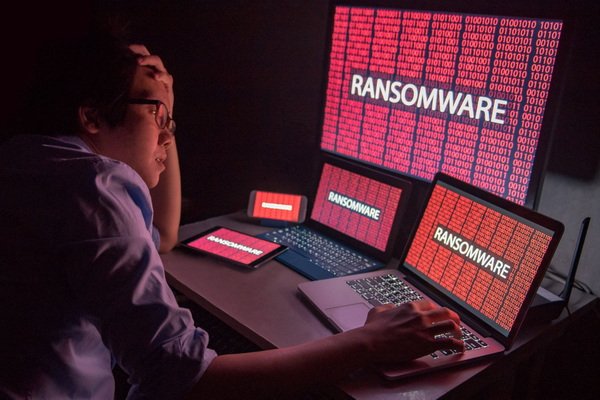บ่อยครั้งที่การนำกลยุทธ์ Zero Trust มาใช้ปกป้องความปลอดภัยในองค์กรถูกมองว่าเป็นเรื่องที่ซับซ้อน ซึ่งก็สมควรแล้วหากพิจารณาในหลาย ๆ ด้าน โดย: เคนเนธ ไล รองประธาน ประจำภูมิภาคอาเซียน Cloudflare
กลยุทธ์ Zero Trust ต้องอาศัยการทำงานด้านความปลอดภัยและด้านไอทีอย่างระมัดระวังและเหมาะสม กลยุทธ์นี้เกี่ยวข้องกับการคิดใหม่ทำใหม่ของนโยบายเริ่มต้นของการใช้งานและสถาปัตยกรรมเครือข่ายที่พิจารณาขอบเขตเป็นสำคัญ การใช้การทำงานข้ามทีมร่วมกัน และความเชื่อมั่นในบริการใหม่ ๆ ด้านความปลอดภัย
เป็นที่เข้าใจได้ว่าองค์กรบางแห่งอาจเลื่อนการปรับใช้กลยุทธ์ความปลอดภัยนี้ โดยชี้ว่าการนำ Zero Trust มาใช้ทั่วทั้งองค์กรอาจทำให้เกิดความไม่แน่นอนได้ นอกจากนั้น ทั้งข้อเสนอและตัวเลือกมากมายจากผู้ขาย ประกอบกับแหล่งข้อมูลที่แตกต่างกัน และแนวโน้มที่กระบวนการทำงาน ณ ตอนนั้นอาจหยุดชะงักได้ อาจเป็นประเด็นที่ทำให้องค์กรไม่กล้านำระบบรักษาความปลอดภัย Zero Trust มาปรับใช้

ดังที่กล่าวมาแล้วว่าธุรกิจต้องเผชิญกับภูมิทัศน์ภัยคุกคามที่เปลี่ยนไปอยู่ตลอด ซึ่งปัจจุบันนี้ผู้โจมตีใช้วิธีการที่ซับซ้อนมากขึ้นและพุ่งเป้าไปยังเหยื่อที่ไม่ทันตั้งตัว โดยข้อมูลทั้งหมดในเครือข่ายของ Cloudflare ซึ่งเป็นเครือข่ายที่ใหญ่ที่สุดและเชื่อมต่อกันมากที่สุดในโลกเครือข่ายหนึ่ง เปิดเผยว่าช่วงไตรมาส 2 ของปีนี้ มีภัยคุกคามทางไซเบอร์เกิดขึ้นในภูมิภาคเอเชียตะวันออกเฉียงใต้เฉลี่ย 7.7 พันล้านรายการต่อวัน
หรือกล่าวให้ชัดคือแนวทาง Zero Trust ไม่ใช่ทางเลือกด้านกลยุทธ์อีกต่อไปแล้วในยุคดิจิทัล แต่มันคือทางรอด โดยผู้บริหารด้านความปลอดภัยจำเป็นต้องลุกขึ้นมาและใช้โอกาสนี้จัดการความปลอดภัยขององค์กร มิฉะนั้นอาจเสี่ยงต่อการถูกโจมตีทางไซเบอร์
ก้าวแรกของการนำ Zero Trust มาใช้
แนวทาง Zero Trust ครอบคลุมอะไรบ้าง? ระบบรักษาความปลอดภัยแบบ Zero Trust ในบริบทของเครือข่าย กำหนดให้มีการตรวจสอบ ยืนยันข้อมูล เข้ารหัส และบันทึกทุกคำขอ-คำสั่งที่ป้อนเข้ามาและส่งออกไปภายในเครือข่ายองค์กร โดยแนวคิดที่ถือปฏิบัติคือไม่ควรไว้ใจคำขอหรือคำสั่งใด ๆ ทั้งสิ้น ไม่ว่าจะได้รับมาจากที่ใดหรือกำลังส่งต่อไปที่ใด โดยทุกคำขอจะต้องผ่านการตรวจสอบทั้งหมด

การเริ่มดำเนินการไปสู่ Zero Trust ช่วงเริ่มต้น หมายถึงการกำหนดและตั้งค่าความสามารถเหล่านี้ขึ้นในที่ที่จากเดิมนั้นไม่มีมาก่อน สำหรับองค์กรที่เริ่มต้นกระบวนการนี้จากศูนย์มักจะหมายถึงการขยายความสามารถให้เหนือกว่าขอบเขตของ “เครือข่ายพื้นฐานที่เพิ่มเข้ามาเพื่อความปลอดภัย หรือที่เรียกว่า Network Perimeter” เครือข่ายเดียว
ลองพิจารณา 5 โครงการการนำ Zero Trust มาใช้อย่างง่ายดายที่สุด โครงการเหล่านี้มุ่งเน้นไปที่การรักษาความปลอดภัยของผู้ใช้ แอปพลิเคชัน เครือข่าย และปริมาณการใช้งานอินเทอร์เน็ต โครงการทั้งหมดนี้อาจไม่สามารถบรรลุเป้าหมาย Zero Trust ได้อย่างสมบูรณ์ตามลำพัง แต่สามารถมอบประโยชน์ได้ในทันที พร้อมสร้างแรงขับเคลื่อนช่วงเริ่มต้น และวางรากฐานการเปลี่ยนแปลงให้ขยายครอบคลุมยิ่งขึ้นในลำดับถัดไป
1. การยืนยันตัวตนแบบหลายปัจจัยสำหรับแอปพลิเคชันสำคัญ ๆ
ตามแนวทาง Zero Trust เครือข่ายจะต้องมั่นใจว่าคำขอหรือคำสั่งใด ๆ นั้นมาจากหน่วยงานที่มีตัวตนเชื่อถือได้ โดยองค์กรจำเป็นต้องสร้างมาตรการป้องกันการขโมยข้อมูลส่วนบุคคลของผู้ใช้ผ่านการฟิชชิ่งหรือการรั่วไหลของข้อมูล การยืนยันตัวตนแบบหลายปัจจัย (Multi-factor authentication หรือ MFA) ถือเป็นการป้องกันที่ดีที่สุดจากการขโมยข้อมูลส่วนบุคคล แม้ว่าการนำ MFA มาใช้อย่างสมบูรณ์แบบอาจใช้เวลานาน แต่การมุ่งเน้นไปที่แอปพลิเคชันสำคัญที่สุดก่อนนั้นถือเป็นวิธีการที่ง่ายกว่าและมีประสิทธิผลสูงกว่า
องค์กรที่มีผู้ให้บริการข้อมูลส่วนบุคคลอยู่แล้วสามารถกำหนดค่า MFA โดยตรงกับผู้ให้บริการนั้น ๆ ได้ โดยใช้รหัสครั้งเดียวหรือการแจ้งเตือนในแอปที่ส่งไปยังอุปกรณ์มือถือของพนักงาน ในกรณีขององค์กรที่ยังไม่มีผู้ให้บริการข้อมูลส่วนบุคคล องค์กรก็ยังสามารถเลือกใช้วิธีอื่นที่ง่ายกว่าได้ เช่น การใช้แพลตฟอร์มโซเชียล อย่าง Google, LinkedIn และ Facebook หรือเลือกรับรหัสผ่านครั้งเดียว (OTP) ที่ส่งไปยังหมายเลขโทรศัพท์มือถือ เพื่อตรวจสอบข้อมูลส่วนบุคคลของผู้ใช้ได้
ทั้งหมดนี้คือวิธีการเข้าถึงแบบ DIY สำหรับหน่วยงานบุคคลที่สามโดยไม่ต้องเพิ่มพวกเขาลงในกลุ่มผู้ให้บริการข้อมูลส่วนบุคคลขององค์กร และยังสามารถนำไปใช้ภายในบริษัทได้อีกด้วย
2. การบังคับใช้นโยบาย Zero Trust ในแอปพลิเคชันสำคัญ
การบังคับใช้นโยบาย Zero Trust ไม่ได้หมายถึงการยืนยันตัวตนของผู้ใช้เพียงอย่างเดียว แอปพลิเคชันก็ต้องได้รับการปกป้องด้วยเช่นกันตามหลักการตรวจสอบและยืนยันคำขอเสมอ โดยจะมีการพิจารณาพฤติกรรมและปัจจัยในบริบทต่าง ๆ ก่อนการตรวจสอบและยืนยันความถูกต้องของข้อมูล และเฝ้าตรวจติดตามกิจกรรมอย่างต่อเนื่อง เช่นเดียวกับในโครงการแรก การนำนโยบายนี้ไปปรับใช้จะง่ายขึ้นเมื่อนำไปใช้ร่วมกับรายการเริ่มต้นของแอปพลิเคชันสำคัญ
3. เฝ้าติดตามแอปพลิเคชันอีเมลและกรองการฟิชชิ่ง
อีเมลคือช่องทางการสื่อสารอันดับหนึ่งขององค์กรส่วนใหญ่ และเป็นแอปพลิเคชัน SaaS ที่ใช้งานมากที่สุด และพบการโจมตีบ่อยที่สุด ดังนั้นองค์กรจำเป็นต้องแน่ใจว่าได้นำหลัก Zero Trust มาใช้ร่วมกับอีเมลเพื่อเพิ่มประสิทธิภาพของการกรองและการตรวจสอบภัยคุกคามที่เป็นมาตรฐาน
นอกจากนี้ ผู้เชี่ยวชาญด้านความปลอดภัยควรพิจารณาการใช้เบราว์เซอร์แบบแยกอิสระหรือ Isolated Browser เพื่อกันลิงก์ที่ไม่น่าสงสัยออกมาไว้เพียงพอที่จะบล็อกได้อย่างสมบูรณ์
4. ปิดพอร์ตขาเข้าทั้งหมดที่อยู่บนอินเทอร์เน็ตสำหรับการเปิดใช้แอปพลิเคชัน
การเปิดพอร์ตเครือข่ายขาเข้า หรือ Open Inbound Network Ports เป็นอีกช่องทางการโจมตีโดยทั่วไปและควรได้รับการป้องกันแบบ Zero Trust โดยการยอมรับแค่การรับ-ส่งข้อมูลจากแหล่งที่มาที่รู้จัก เชื่อถือได้ และผ่านการตรวจสอบแล้วเท่านั้น
เทคโนโลยีการสแกนสามารถตรวจพบพอร์ตเหล่านี้ จากนั้นใช้พร็อกซีแบบย้อนกลับของ Zero Trust เปิดแอปพลิเคชันบนเว็บได้อย่างปลอดภัยผ่านอินเทอร์เน็ตสาธารณะโดยไม่ต้องเปิดพอร์ตขาเข้าใด ๆ และบันทึกรายการเดียวที่สาธารณะมองเห็นได้ของแอปพลิเคชันคือบันทึก DNS ที่เป็นคำขอหรือคำสั่งที่เก็บอยู่ในฐานข้อมูลของระบบ Domain Name System ซึ่งสามารถป้องกันได้โดยใช้การยืนยันสิทธิ์และความสามารถในการบันทึกข้อมูลแบบ Zero Trust เพื่อเพิ่มชั้นความปลอดภัยบันทึก DNS แบบภายในและแบบส่วนตัวมีประสิทธิภาพเพิ่มขึ้นได้จากการใช้ Zero Trust Network Access solution
5. ปิดกั้นคำขอ DNS ที่เป็นภัยคุกคามหรือมีความเสี่ยงกับปลายทาง
การกรองข้อมูล DNS หรือ DNS Filtering คือแนวทางปฏิบัติที่นำมาใช้เพื่อป้องกันไม่ให้ผู้ใช้เข้าถึงเว็บไซต์และแหล่งข้อมูลอินเทอร์เน็ตอื่น ๆ ที่รู้หรือสงสัยว่าเป็นอันตราย โดยการกรอง DNS จะไม่ได้รวมอยู่ในการสื่อสารโต้ตอบของ Zero Trust เสมอไป เนื่องจากไม่เกี่ยวข้องกับการตรวจสอบหรือบันทึกการรับ-ส่งข้อมูล
อย่างไรก็ตาม เมื่อใช้ DNS Filtering แล้ว องค์กรสามารถสร้างความมั่นใจได้ว่ามีมาตรการป้องกันที่ผู้ใช้ (หรือกลุ่มผู้ใช้) สามารถโอนและอัปโหลดข้อมูลได้ สอดคล้องกับปรัชญา Zero Trust ที่กว้างยิ่งขึ้น
เข้าใจภาพ Zero Trust ให้กว้างกว่าเดิม
การนำโครงการทั้ง 5 นี้ไปใช้ถือเป็นการก้าวเข้าสู่โหมด Zero Trust อย่างชัดเจน โดยองค์กรใดก็ตามที่ดำเนินการเหล่านี้จนแล้วเสร็จจะมีความคืบหน้าในด้านการรักษาความปลอดภัยที่ดีขึ้นและทันสมัยยิ่งขึ้นอย่างมีนัยสำคัญ และสร้างรากฐานที่มั่นคงไปด้วยในขณะดำเนินการ
อย่างไรก็ตาม การนำ Zero Trust มาใช้อย่างกว้างขวางยังคงเป็นหัวข้อที่ดูซับซ้อนขององค์กรในยุคปัจจุบัน เนื่องจากเส้นทางของแต่ละองค์กรจะแตกต่างกันเล็กน้อยตามการจัดลำดับความสำคัญ ความต้องการ และแผนธุรกิจในอนาคต
ที่สำคัญก็คือ ผู้บริหารด้านความปลอดภัยจำเป็นต้องกำหนดวัตถุประสงค์ที่ชัดเจนในแผนงาน Zero Trust เพื่อให้สามารถกลับมาควบคุมสภาพแวดล้อมด้านไอทีของตนได้อีกครั้ง การโจมตีทางไซเบอร์ที่เป็นอันตรายมีความสร้างสรรค์มากขึ้นกว่าเดิม และมักหาวิธีที่มีประสิทธิภาพเพื่อแทรกซึมเข้าไปในองค์กร และทำให้ทีมงานด้านความปลอดภัยเกิดการสับสนผ่าน Digital Touchpoints มากมายที่มีอยู่ในปัจจุบัน มีเพียงการวางแผนที่ชัดเจนเท่านั้นที่จะช่วยให้องค์กรทำให้พนักงาน แอปพลิเคชัน และเครือข่ายของตนมีความรวดเร็วและปลอดภัยยิ่งขึ้นในทุกที่ พร้อม ๆ กับช่วยลดความซับซ้อนและต้นทุนค่าใช้จ่าย
Zero Trust is complex, but getting started doesn’t have to be
By: Kenneth Lai, Vice President, ASEAN at Cloudflare
Adopting Zero Trust is often recognized as a complex journey. In many ways, this reputation is well deserved.
Zero Trust requires work that Security and IT are justifiably cautious about. It involves rethinking default-allow policies and perimeter-based network architecture, enabling collaboration between functionally different teams, and trusting new security services.
Understandably, some organizations may postpone this transformation, citing the uncertainty involved in adopting Zero Trust across the organization. The wide variety of available vendor offerings, coupled with many different information sources, and potential disruption to current workflows, all may deter organizations from deploying Zero Trust security.
That said, the evolving threat landscape that businesses are faced with today is ridden with attackers using increasingly sophisticated methods to target unsuspecting victims. Cloudflare’s own data across its network, one of the world’s largest and most interconnected, revealed that an average of 7.7 billion cyber threats per day targeted the Southeast Asia region in Q2 2024.
In other words, a Zero Trust approach may no longer be an optional strategy in today’s digital age. Security leaders need to rise to the occasion and take charge of their organization’s security posture, or risk being vulnerable to cyber attacks.
Taking the first step towards Zero Trust adoption
What exactly does Zero Trust entail? In a networking context, Zero Trust security requires that every request moving into, out of, or within a corporate network is inspected, authenticated, encrypted, and logged. It’s based on the idea that no request should be implicitly trusted, no matter where it comes from or where it’s going. Every request must be validated.
Making early progress toward Zero Trust means establishing these capabilities where none are currently present. For organizations starting from scratch, this often means extending capabilities beyond a single ‘network perimeter.’
Here are five of the simplest Zero Trust adoption projects that focus on securing users, applications, networks, and Internet traffic. They won’t achieve comprehensive Zero Trust alone, but they do offer immediate benefits, create early momentum and lay the foundation for broader transformation.
1. Multi-factor authentication for critical applications
In a Zero Trust approach, the network must be extremely confident that requests come from trusted entities. Organizations need to establish safeguards against user credentials being stolen via phishing or data leaks. Multi-factor authentication (MFA) is the best protection against such credential theft. While a complete MFA rollout may take significant time, focusing on the most critical applications is a simpler yet impactful win.
Organizations that already have an identity provider in place can set up MFA directly within that provider, through one-time codes or in-app push notifications sent to employee mobile devices. Even without an identity provider in place, organizations can opt for a different, simple route. Using social platforms such as Google, LinkedIn, and Facebook, or one-time passwords (OTP) sent to a mobile number, can help double-check user identities.
These are common ways to DIY access for third-party contractors without adding them to a corporate identity provider, and can also be applied within the company itself.
2. Zero Trust policy enforcement for critical applications
Enforcing Zero Trust is more than simply verifying user identities. Applications must also be protected with policies that always verify requests, consider a variety of behavior and contextual factors before authenticating, and continuously monitor activity. As in Project 1, implementing these policies becomes simpler when applied to an initial list of critical applications.
3. Monitor email applications and filter out phishing attempts
Email is the number one way most organizations communicate, the most-used SaaS application, and the most common entry point for attackers. Organizations need to ensure they apply Zero Trust principles to their email to complement their standard threat filters and inspections.
Additionally, security professionals should consider using an isolated browser to quarantine links that are not suspicious enough to completely block.
4. Close all inbound ports open to the Internet for application delivery
Open inbound network ports are another common attack vector and should be given Zero Trust protection, only accepting traffic from known, trusted, verified sources.
These ports can be found using scanning technology. Then, A Zero Trust reverse proxy can securely expose a web application to the public Internet without opening any inbound ports. The application’s only publicly visible record is its DNS record — which can be protected with Zero Trust authentication and logging capabilities.
As an added layer of security, internal/private DNS can be leveraged using a Zero Trust Network Access solution.
5. Block DNS requests to known threats or risky destinations
DNS filtering is the practice of preventing users from accessing websites and other Internet resources that are known or highly suspected to be malicious. It is not always included in the Zero Trust conversation because it does not involve traffic inspection or logging.
However, with DNS filtering in place, organizations can ensure there are safeguards as to where users (or groups of users) can transfer and upload data — which aligns well with the broader Zero Trust philosophy.
Understanding the broader Zero Trust picture
Implementing these five projects can be a relatively straightforward foray into Zero Trust. Any organization that completes these projects will have made significant progress toward better, more modern security, and established a sound foundation while doing so.
That said, broader Zero Trust adoption remains a complex topic for organizations today. Everyone’s journey will be slightly different, depending on business priorities, needs, and future plans.
Importantly, security leaders need to set out clear objectives in a Zero Trust roadmap to regain control of their IT environment. Malicious attacks are getting more creative than ever before, finding effective ways to infiltrate organizations and obfuscate security teams through the many digital touchpoints present today. Only with a clear plan can organizations make their employees, applications, and networks faster and more secure everywhere, while reducing complexity and cost.





